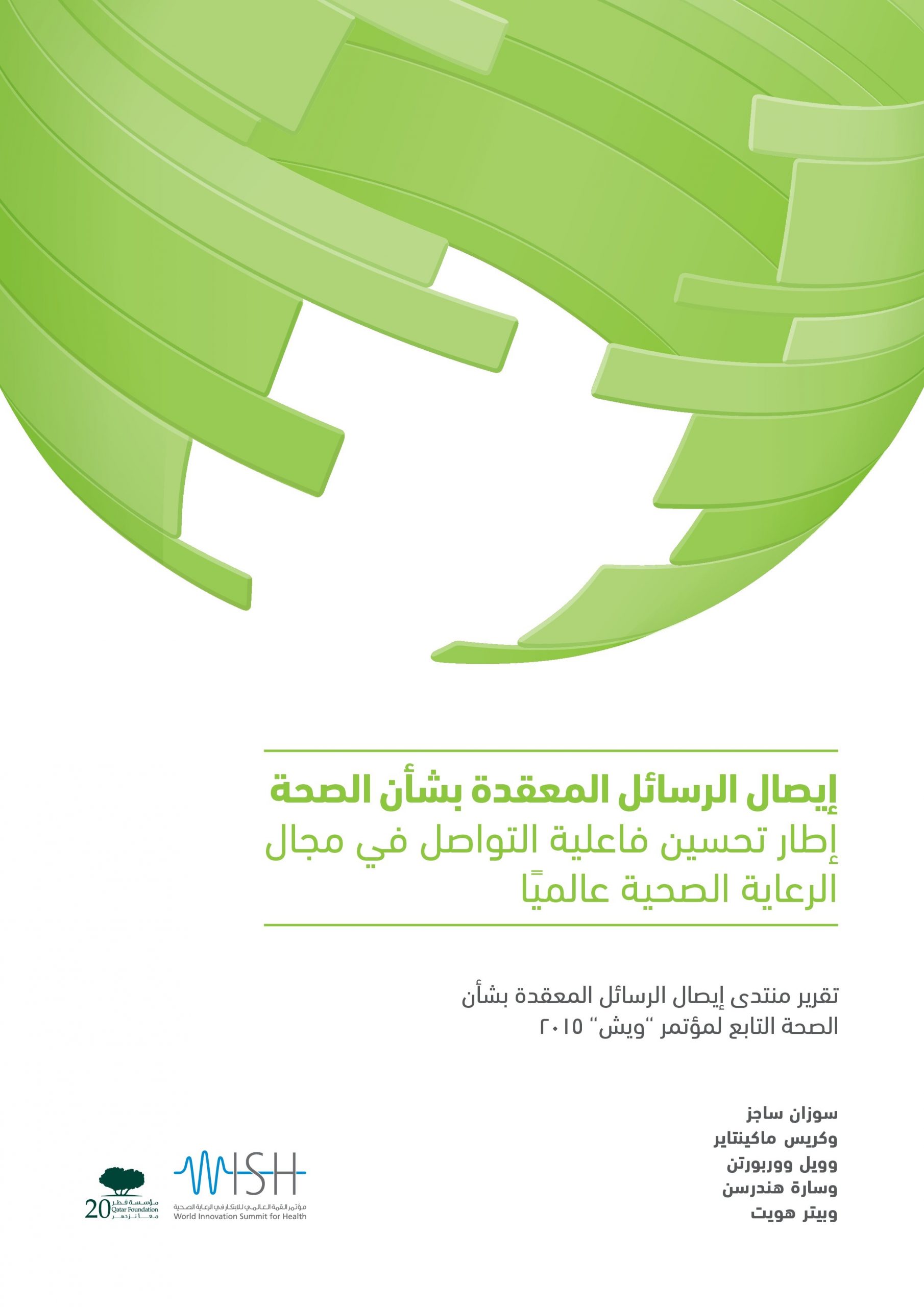ملخص تنفيذي
Aging populations, the rise in ‘lifestyle’ diseases, and the continued burden of infectious diseases pose immense challenges to our health and wealth. Simply providing more health services to treat disease is no longer a viable or sustainable option. In the absence of extensive and politically improbable market intervention, policymakers, non-governmental organizations (NGOs), and health professionals are left with few options other than to try to influence individuals to make smarter choices. Although a range of strategies are required to achieve this, the importance of effective communication cannot be underestimated.
Effective communication means conveying messages in a way that improves our ability to maintain our own health, to understand the threats we face and how to reduce them, and to respond appropriately when treatment is required.
Health communication is “the scientific development, strategic dissemination, and critical evaluation of relevant, accurate, accessible, and understandable health information communicated to and from intended audiences to advance the health of the public.”1 As such, effective health communication has an essential role in promoting healthy choices and creating better understanding of health policy issues.2 Good communication is also crucial to helping individuals, health professionals, healthcare providers, governments and policymakers recognize that the maintenance of good health is a shared responsibility in which all parties have a role. While there is a long history of government attention to and regulation of health services and products, health communication has been relatively neglected.
Health communicators must take many factors into account when charting a course. Health matters are often inherently complex and individuals need to keep pace with a fast-changing and sometimes seemingly contradictory scientific evidence base. Technology is altering how people receive, share, and debate information, fundamentally changing the dynamics between messenger and recipients; the internet and rise of social media are accelerating the speed and spread of contested information. At the same time, trust in traditional sources of information is declining, and those who convey health messages must navigate their way through an increasingly fragmented media, often in a heavily politicized context.
The good news is that we know what it takes to deliver effective messages using a structured and planned approach. The choices communicators make when deciding who should deliver health messages, or how the messages they want to communicate are targeted to audiences and tailored to individuals, make a demonstrable difference to the impact those messages will have.
To help guide communicators’ choices, this paper provides a framework for effective communication and suggests three policy-related enablers to improve health communication and its associated effects. The framework we describe in this document offers health communicators a practical and generalizable process for answering the critical questions any communication must address: What is this message trying to accomplish? Why should this message be said? What should be said? How should it be said? Where should it be said? To whom should it be said? Who should say it? How many times should it be said? The framework has three phases: Assess, Do and Describe (ADD), taking communication from its inception to its evaluation.
The role of the ADD framework is illustrated through a selection of case studies on topics relevant to policymakers and communicators worldwide. Each case demonstrates the framework’s principles in action, showing that it is scalable, generalizable and applicable for communicating a range of health issues in diverse settings.
Adoption and use of the ADD framework is this report’s key recommendation. We also outline three enablers, which will facilitate improvement in the efficacy of health communication. They require governments, healthcare providers and NGOs to ensure health communication has the essential resources, the necessary priority and the compelling messengers it needs to be a success.

